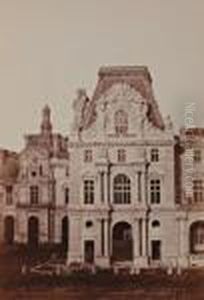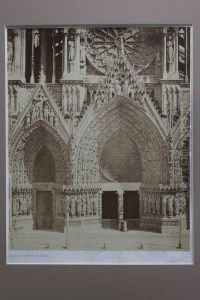Bisson Freres Paintings
The Bisson Frères, or Bisson Brothers, comprised Louis-Auguste Bisson (1814-1876) and Auguste-Rosalie Bisson (1826-1900), who were pioneering French photographers. Their partnership significantly contributed to the development of photography in the 19th century, notably in the realms of architectural and landscape photography. The brothers were among the first to take photographs of the Alps, their efforts culminating in spectacular images that captured the imagination of the European public. Their work in the field of mountain photography is particularly notable for its technical and aesthetic achievements, considering the cumbersome equipment and sensitive materials of the period.
Louis-Auguste and Auguste-Rosalie were born in Paris to a father who was a printer and publisher, which provided them an early exposure to the technical aspects of producing images. They ventured into photography, which was then at its infancy, after initially starting their careers in lithography. The brothers were quick to explore the new medium's potential, embracing the daguerreotype process, which was the first commercially successful photographic process.
In 1860, the Bisson Frères achieved one of their most remarkable feats by ascending Mont Blanc, Europe's highest peak, with photographic equipment. They produced a series of breathtaking daguerreotypes of the mountain's landscape, showcasing not only their adventurous spirit but also their determination to push the boundaries of the photographic medium. This expedition earned them widespread acclaim and demonstrated the potential of photography as a tool for scientific exploration and artistic expression.
Beyond their mountain photography, the Bisson Frères also made significant contributions to architectural photography. They were commissioned to photograph the restoration of French Gothic cathedrals and other historic buildings, thus preserving a visual record of France's architectural heritage. Their work is characterized by a meticulous attention to detail and a masterful handling of light and shadow, which brought out the textures and forms of the architectural subjects.
The legacy of the Bisson Frères extends beyond their photographic output. They were instrumental in advancing the technical aspects of photography, experimenting with large-format prints and pushing for improvements in photographic clarity and detail. Their efforts helped to elevate photography to a respected art form and paved the way for future generations of photographers. Despite the challenges of their time, including the physical demands of their expeditions and the limitations of early photographic technology, the Bisson Frères captured images that continue to inspire for their historical significance and artistic beauty.

